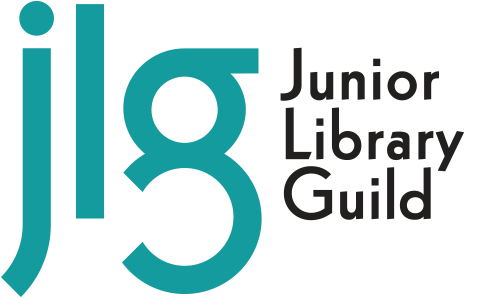A Fresh Start to 2022 with Library Weeding


There’s something innately magical about the act of decluttering and clearing spaces. In the school library, even when our spaces are well organized and functional, the energetic boost that comes from freshly tended-to shelves is something that is palpable to both students and librarians alike. It’s well known to librarians that library weeding often leads to a boost in circulation.
So why is library weeding, or deselection, often put on the back burner? First, people have a tendency to hold onto things, and some libraries are tied to collection evaluation standards that are established by the total number of items in the library; quantity can sometimes be valued over quality or relevancy. But in spite of these reasons to put off library weeding, we thought we’d give you a simple guide to declutter those shelves. Working in tandem with the students' renewed excitement alongside the new year makes the start of 2022 a perfect time for creating shelves that are more intentional.
Reasons for Library Weeding
As a school librarian, we know you are continually looking for ways to not only maintain your school library, but improve your school library, and library weeding is a great way to accomplish both tasks without having to spend a dime. Here are just a few reasons why school librarians and their students reap the benefits of library weeding.
Spacious Shelves
Library weeding is beneficial for school librarians who face overcrowded bookshelves. Overcrowded bookshelves can result from the gradual accumulation of collections over time without the addition of more bookshelves due to a lack of funding, no room for expansion, or just competition for space. Oftentimes, books get consolidated to the walls as more makerspaces and collaborative spaces with flexible seating and furniture make their way into the school library. And like a cluttered room, shelves that are jammed packed with books can be overwhelming for both librarians and students, deterring students from even grabbing a book in the first place.
On the other hand, there is something incredibly inviting about bookshelves that offer ease of access and the space to easily browse titles. Library weeding will create more space on shelves which will allow for face-out displays that grab students’ attention. Emptier shelves also make it easier for students to make book selections and as a bonus, easier for librarians to restock their shelves.
Increased Circulation
When it comes to library weeding, it seems that the old adage of ‘less is more’ holds true in that less cluttered shelves tend to create more circulation of materials. For one, a weeded collection looks better, and library patrons notice. Also, fewer materials to search through means that patrons can more easily find something that they are interested in. This also holds true for digital collections as well. Additionally, not seeing damaged books out on the shelves gives the sense that the collection is maintained and up to date. All of these factors mean that the odds of books getting checked out will increase.
Remaining Relevant
School librarians understand the importance of providing value for their users with the best possible resources that are out there, making library weeding an increasingly important task for modern school librarians. Outdated resources can be obsolete, or can provide the wrong information to students, especially when pertaining to STEM collections. In this article from American Libraries Magazine, librarians noted how during their weeding process they discovered outdated content in an astronomy book that discussed how "one-day" humans would walk on the moon!
Aside from outdated information, as our society becomes more and more self-aware, materials that are inappropriate or offensive that once may have been overlooked are getting a fresh set of eyes. In this article from Library Journal, librarians discovered titles in their library while weeding, such as, How To Get More Fun Out of Smoking (Ram, 1941).
Removal of Damaged Materials
As school librarians are well aware, books are not always treated with the utmost respect by those that check them out. Consequently, the removal of damaged books is something that will not only improve the appearance of the bookshelves but improve the overall air quality of the library. Banana peels, sticky candy wrappers, water damage, and mold do their share of damage and over time, destroy the integrity of the book. Removing these damaged materials will refresh the library both visually and environmentally.
Refining the Art of Collection Maintenance
When and How Often to Weed
When it comes to library weeding, the general consensus is to pace yourself. Routine maintenance is a good way to tackle anything in life, and library collections are no exception. Many experts agree that library weeding should be an integral part of collection management and something that is routinely practiced throughout the year, rather than doing it all in one clean sweep. Carving out some time every day to pull titles can also help significantly to avoid the time constraints of tackling a big weeding project and helps to avoid PR disasters. History has shown that large-scale weeding efforts, if not carefully planned, can result in misunderstandings and public outcry.
Building a Culture of Transparency and Openness
Most of us believe that books are sacred, and while media specialists and school librarians understand the value of library weeding, other stakeholders like parents, administrators, and teachers may not share that understanding. If your school library is planning a larger-scale library weeding project, the best way to circumvent opposition to the reevaluation of your collection is full transparency. Let the public know your policies. Communicate with them and stay open. For example, public libraries like the Buffalo and Erie County Public Library System keep their guidelines for collection management transparent and online for all to see, taking the mystery out of the process and thus, easing community concerns.
Framing the Language Around Library Weeding
Perhaps one of the most important ways to get the community on board is to use positive language surrounding the reevaluation of books. Instead of wording that denotes a negative connotation like removal, discarding, or retirement, use proactive and positive language when discussing your weeding efforts with stakeholders, like “collection renewal” and “collection reevaluation.”
Where the Books Go
What school librarians do with the books afterward will greatly determine how the public responds, so while finding books a new home can be time-consuming, it can also be well worth the effort. Instead of trying to manage this task alone, leverage the help of students and teachers and get the community involved to repurpose or recycle the books. As an example, a student-led book sale could create funds to go towards titles that students choose, so they feel like they are part of the process. This culture of collaboration can bring the school together while igniting a newfound love for the library.
Restocking the Shelves with New Titles
When it’s time to decide which books to have in your library that will replace those that were removed, it’s crucial to consider the pulse of the community you serve and their changing needs. Talk to students to see what they want to read. Send out surveys to parents, teachers, and administrators and gather their input. For example, SLJ’s Children’s/YA Collection Development and Weeding Survey revealed that “Sixty-three percent of public libraries indicated that their 2020 children’s and YA purchasing reflected the increased needs of remote learners and homeschooling families...this meant more digital materials, more STEM focused materials, and more materials specifically for parents teaching for the first time were purchased.”
In a recent School Library Journal article based on the same SLJ survey, several school librarians mentioned that they try to focus on their students’ needs, and wanted to expand their collection to contain diverse viewpoints that represent their diverse communities. The survey also revealed that an overwhelming majority of school librarians are looking to choose diverse titles for their library collection development.
In closing, when the weeding is over and it is time to order library books for your school libraries’ collection, librarians can trust the expertise and guidance of Junior Library Guild to take the guesswork out of their collection development.
Here’s to a fresh start in 2022!




